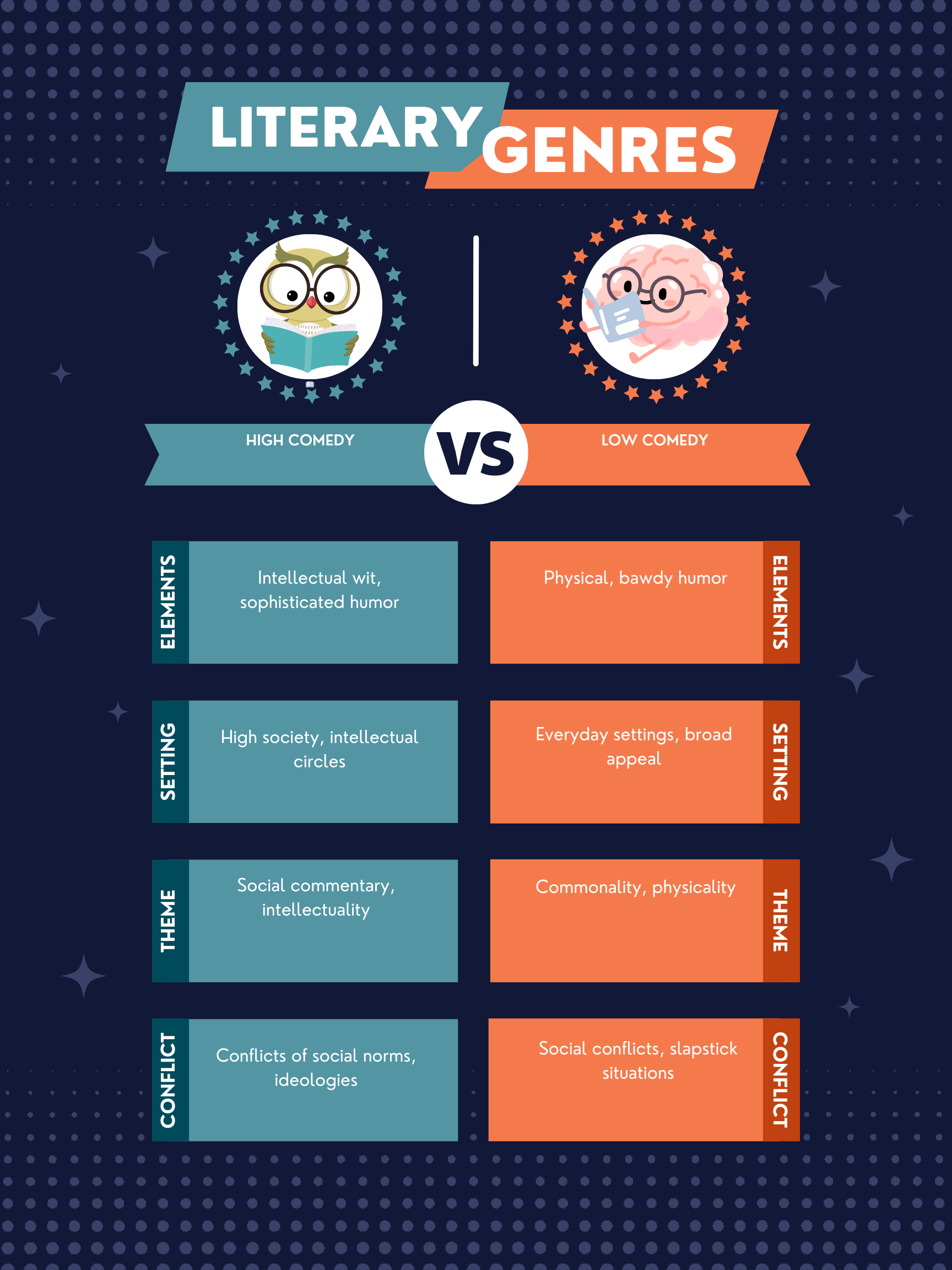High Comedy focuses on wit and character-driven situations, often targeting social classes; Low Comedy relies on physical humor, slapstick, and sillier, more straightforward jokes.
High Comedy
High Comedy is a form of comedy that is characterized by its use of wit, clever dialogue, and an emphasis on the flaws and behaviors of societal classes. It often involves complex situations, satire, and irony, appealing to the intellect of the audience.
Example: Oscar Wilde’s The Importance of Being Earnest showcases High Comedy through its satirical take on Victorian society, marriage, and the pursuit of love, all delivered with Wilde’s famous wit and elegant dialogue.
Low Comedy
Low Comedy, in contrast, is grounded in physical humor, slapstick, exaggerations, and often simple, straightforward jokes. It’s more universally accessible, relying less on language and more on visual and physical gags to elicit laughter.
Example: The Three Stooges films are classic examples of Low Comedy, with their iconic physical slapstick, visual gags, and simple, direct humor appealing to a broad audience without the need for sophisticated dialogue.
Summary
| Literary Device | Definition | Purpose | Usage | Relevant Examples |
|---|---|---|---|---|
| High Comedy | Comedy emphasizing wit, sophisticated dialogue, and societal satire. | To entertain while providing commentary on social norms and behaviors. | Found in works that critique or satirize social classes, often appealing to a more intellectual audience. | Oscar Wilde’s The Importance of Being Earnest. |
| Low Comedy | Comedy based on physical humor, slapstick, and simple jokes. | To elicit laughter through visual gags and physical comedy, accessible to a wide audience. | Utilized in works that focus on universal, physical humor, appealing across diverse audiences without needing complex dialogue. | Three Stooges films. |
Writing Tips
For writers looking to explore High Comedy or Low Comedy, here are some strategies:
- High Comedy: Develop your wit and understanding of societal norms to craft sophisticated humor. Play with irony, satire, and character flaws to create humor that not only entertains but also prompts reflection.
- Low Comedy: Focus on timing, physicality, and visual elements that can translate into humorous scenarios. Even simple situations can become hilariously engaging through exaggeration and physical gags.
FAQs
What is the key difference between High Comedy and Low Comedy?
The key difference lies in their approach to humor: High Comedy is intellectual, focusing on wit and satire, while Low Comedy appeals through physical humor and slapstick.
Can a work of literature include both High Comedy and Low Comedy?
Yes, many works of literature and film blend both types of comedy to appeal to a wider range of audiences and to add layers of humor.
How can I decide which type of comedy to use in my writing?
Consider your audience and the themes of your work. High Comedy suits stories with a focus on social commentary, while Low Comedy is great for universal appeal and immediate laughter.
Exercise
Determine whether the following scenarios are examples of High Comedy or Low Comedy:
- A scene where characters engage in a witty exchange of insults, veiled as polite conversation, at a high society ball.
- A scene where a character slips on a banana peel and crashes into a wedding cake.
Answers:
Other Device Comparisons You May Find Interesting
- Satire vs Parody: Examine how these humor-based devices critique society and culture in different ways.
- Tragedy vs Comedy: Explore the contrasting elements that define these fundamental genres.
- Irony vs Sarcasm: Delve into the subtle differences between these two forms of wit.
- Dramatic Irony vs Situational Irony: Understand how different types of irony contribute to storytelling.
By exploring the nuances between High Comedy and Low Comedy, writers and readers can appreciate the diverse ways humor enriches narratives and connects with audiences. 🎭📚

